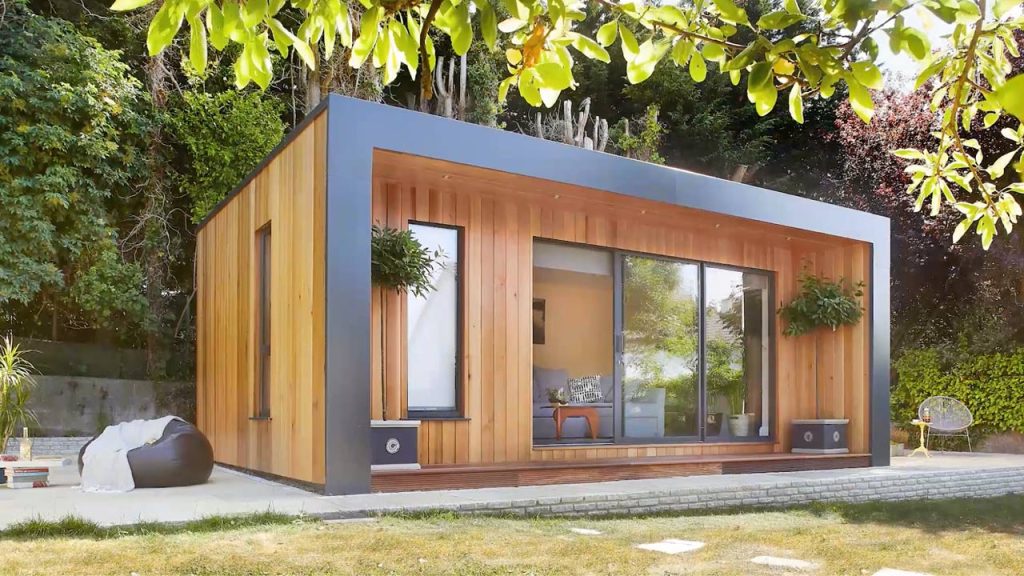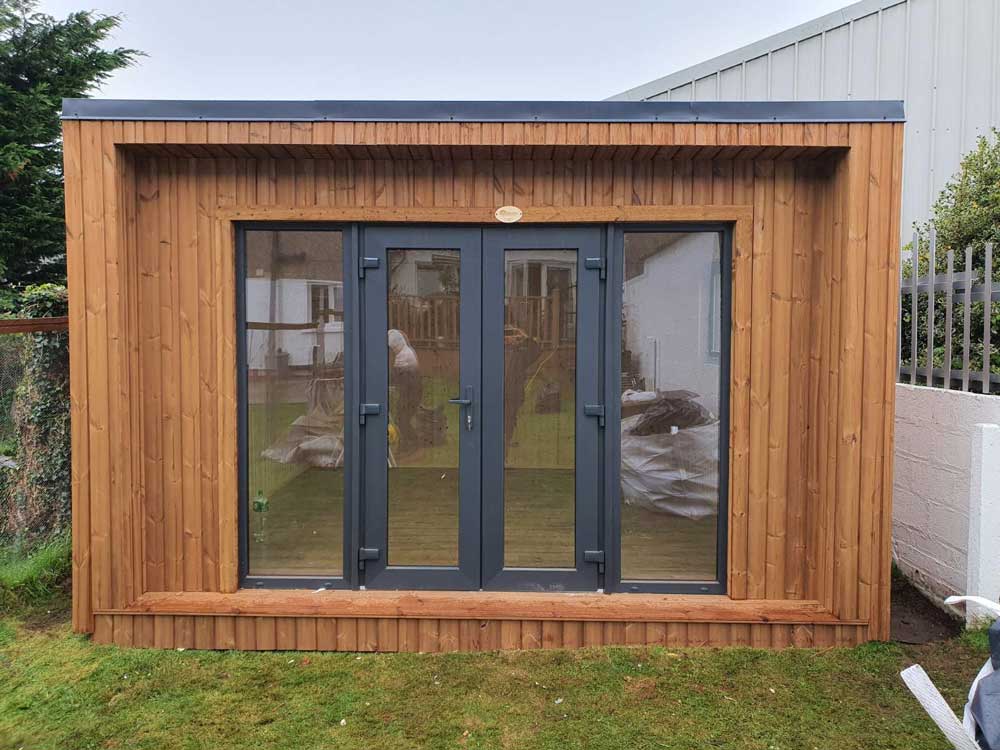Top Info On Planning Permission On Garden Sheds
Top Info On Planning Permission On Garden Sheds
Blog Article
What Authorizations Do You Require For Garden Rooms As Well As Other Structures In Relation To Highways Concerns?
Highways concerns, whether related to the building of conservatories, gardens offices, outhouses, or even extensions and gardens are likely to have an important impact on the need for planning permission. Here are some of the most important aspects to consider. The visibility and sight lines:
Planning permission is required when the new structure hinders access to motorists entering or leaving the property, or impacts sightlines at intersections or curves in the road. The planning authority has to determine whether or not a building could be a danger to road traffic safety.
Distance from the highway:
Typically, structures that are constructed close to highways such as front garden rooms or extensions near streets require approval from the planning department. To ensure that the structure isn't a hindrance to the safety of highways, there are distance regulations.
Access and Egress:
It is probable that planning permission will be needed to alter the existing access points or to create new ones. It is crucial to make sure that all access points and exits are secure and do not hinder traffic.
Parking Arrangements:
Planning permission could be required if a proposed structure impacts existing parking spaces or demands additional parking. The planning authority will determine whether the new development has sufficient parking spaces or doesn't create congestion on streets.
Traffic Generation
Planning permission is necessary for any project that are expected to generate traffic, such as garden offices where clients visit. This includes a review of the traffic levels in the area and road conditions.
Impact on Pedestrian Access
Planning permits are required if the proposed structure is going to encroach on pedestrian walkways or pavements. To ensure safety of pedestrians and accessibility, it's essential to not block the pathway.
Impact of Construction on Highways
The effects of construction work on highways, including the movement of heavy vehicles, as well as temporary obstructions could require approval from the planning authority. The planning authority could make conditions for construction work to reduce disruption to roads.
Drainage and water runoff
Another consideration is the impact of the development on runoff and drainage water, especially how it impacts roads. Planning permission ensures the new construction won't cause problems with drainage or flooding that could negatively impact the highway.
Street Furniture and Utilities
A planning permit is required for any proposed building that could impact street furniture like signs, lampposts or underground utilities like electric cables and water pipes. This will be addressed by the authority responsible for planning in conjunction with other authorities.
Highway Authority Guidelines for Compliance:
Local highway authorities have their own set of guidelines and regulations regarding developments that are in close proximity to highways. Planning permits assure that rules are adhered to in order to ensure the safety of roads.
Noise and disturbances from traffic:
The new structure could increase traffic or noise (e.g. an office that is located in the garden and is a place for deliveries and visitors). Permission for planning is required to limit any adverse effects.
Accessibility to public transport
Planning permission is required when the proposed development will have an impact on infrastructure for public transport, such as train stations and bus stops. Planning permission will be needed for any developments that might impact the accessibility of public transport facilities like bus stops or train stations.
Highways play a significant role in determining whether to grant planning permission for conservatories or gardens. To make sure that the development you are planning doesn't negatively affect the safety of roads and traffic flow as well as pedestrian access or even the infrastructure overall, you must make sure to check this. Talking with your local authority for planning and the highway authority at the beginning of the planning process can assist in addressing these issues and ensure compliance with all applicable regulations. See the top laying decking on grass for website examples including gym outhouse, outhouse buildings, composite garden rooms, ground screws vs concrete base, garden rooms near me, outhouse building, costco garden office, ground screws vs concrete, garden room heater, garden room planning permission and more.
Regarding The Impact On The Environment, What Kind Of Planning Permission Would You Need For Your Garden Rooms?
Be aware of the impact on the environment when constructing an outdoor space, conservatory, outhouses or garden offices can influence the necessity of planning approval. Be aware of the following environmental considerations:
If the proposed structure is likely to affect wildlife habitats within your region, like hedgerows, trees and ponds then you will need permission to plan the project. To evaluate and reduce the impacts of biodiversity, an ecological assessment may be necessary.
Protected Species & Habitats
The planning permission is required if the area is home to protected species (e.g. bats and newts, etc.)), or is located within or near habitats that are of scientific interest (e.g. Sites of Special Scientific Interest: SSSI). The site must be protected through specific measures.
Preservation Orders for Trees Preservation Orders
Permission is required to take down or alter the trees protected by TPOs. Local authorities will review any impacts and could demand the replacement of trees or mitigation measures.
Risk and Management of Flood Risk and Water Management
Planning permission is required for any development that is located near water bodies or flood-prone areas. It may be necessary to perform a flood risk assessment to ensure that the structure isn't prone for flooding and has drainage solutions.
Sustainable Construction Practices
It could be necessary to get planning permission for sustainable construction methods and materials. It is essential to take into consideration the energy efficiency of products, the insulation they provide, and their carbon footprint.
Drainage and Surface Water Runoff:
A key consideration for the environment is how the proposed structure will affect the drainage system and the runoff of surface water. Planning permission is needed to ensure that drainage systems are properly constructed in order to stop flooding and waterlogging.
Stability of soil and soil
If the construction is likely to affect soil quality or stability of the land the need for planning permission. Planning permission is needed if the construction is likely to affect soil quality or land stability.
Air Quality
In the case of developments that might affect local air quality like those in close proximity to major roads or industrial zones, planning permission is needed. This will ensure that the levels of air pollution remain within acceptable limits. Also, mitigation measures will be taken into consideration.
Noise Pollution:
Planning permission is needed if the garden room, or any extension, likely generate significant noise. The local authority evaluates the noise level as well as possible effects on the surrounding surroundings and the neighbors.
Waste Management:
It is essential to handle waste properly during and after construction. Planning permission is required to ensure that adequate arrangements are made for recycling and disposal of waste to minimize environmental impacts.
Energy Efficiency
The planning permit could include requirements for energy efficiency like solar panels, high performance glazing or other green technologies. This reduces the impact of the building on the environment.
The compliance with Environmental Regulations:
Environmental laws and regulations are applicable to all developments which includes the UK Environmental Protection Act. Planning permission is required to ensure that the compliance with all legal requirements as well as the development being sustainable in the environmental sense.
Planning permission for garden office outsidehouse, conservatory, or extension must consider many environmental implications. Consulting with the local authority for planning at the beginning of the process of planning is crucial to be aware of the requirements specific to each area and ensure that the proposed development is environmentally responsible and compliant with all relevant laws. Read the best planning permission garden room for site advice including costco garden rooms, outhouse for garden, garden room vs extension, garden room permitted development, costco garden buildings, outhouse buildings, garden rooms brookmans park, garden room planning permission, how to get power to a garden room, costco garden room and more.
What Is The Permission Needed For Garden Rooms, Etc. In Terms Of Utilities And Infrastructure
Planning permission can be required for the construction of garden rooms, outhouses or garden offices. Infrastructure and utilities are also crucial considerations. Here are the main aspects to take into consideration. Water supply and drainage
If the new building requires connections to drainage or water supply systems, a planning approval could be needed. The water authority in the area may have to evaluate the impact on local water supply and sewage systems.
Electricity and Gas Connections:
If the building requires gas or electricity connections, a planning approval may be required. The connections must be in line with safety and building standards.
Utility Easements:
Planning permits are required for buildings which are situated within easements (areas reserved for infrastructure and utility lines). The construction in these areas could require approval from the local utility company.
Sewage systems and septic tanks
Planning permission is needed if the new structure requires the installation of a septic tank, or an on-site sewage treatment system. The systems must be in compliance with health and environmental standards.
The Drainage System and Surface Water Management:
Planning permission might be needed to address the drainage issue and surface water runoff of the proposed structure. Measures to prevent flooding, erosion, and water pollution may need to be implemented.
Access to Utilities for Construction
Planning permission could be required if temporary utilities are needed (such as water for building). Connections that are temporary must be in compliance with safety and environmental standards.
Impact on local infrastructure:
The local authority will assess whether the infrastructure that is in place could help support the development. This includes roads, utilities as well as public services. The local authority will assess whether the existing infrastructure supports the development.
Waste Management and Recycling
Planning approval can include conditions regarding recycling and waste management in the course of construction and after. Adequate provisions for waste disposal and recycling must be in place to minimize environmental impact.
Energy Efficiency and Renewable Energy
The planning permission is required to put in energy-efficient features or systems for renewable energy (such as solar panels or heat pumps) within the new building. The compliance with building regulations as well as environmental standards is essential.
Telecommunications and Internet Connectivity
Planning permission is required for new structures that require Internet or telecommunications connections. In order to ensure that telecommunication infrastructure meets the requirements and standards It is crucial that the infrastructure conforms to these.
Access to the Footpath and Road:
For example, it may be necessary to obtain planning permission before you can construct or alter the design of a footpath. The compliance with safety standards and regulations regarding construction of footpaths and roads is vital.
Accessibility to public transport
A planning permit may be required if the proposed structure affects public transport facilities like trains and bus stops. The public transport infrastructure must adhere to all regulations and standards.
Infrastructure and utilities are crucial factors in determining whether or not planning permission will be required for garden offices, conservatories, outhouses or garden rooms. It's essential to consult with the local planning authority prior to beginning the process of planning to ensure compliance with all relevant regulations and standards. View the top garden room cladding ideas for website advice including garden room conservatory, composite garden rooms, Tring garden rooms, garden room conservatory, what size garden room without planning permission, garden room conservatory, garden outhouses, garden rooms brookmans park, garden outhouses, myouthouse and more.